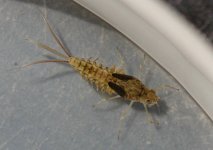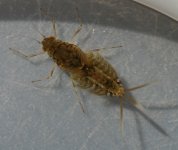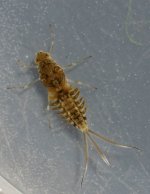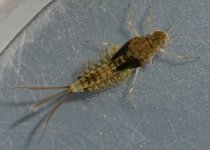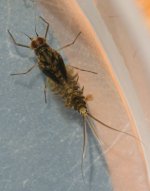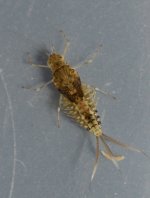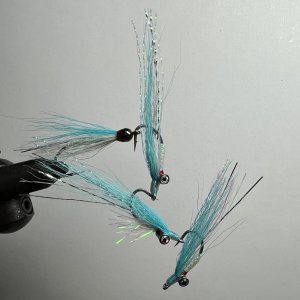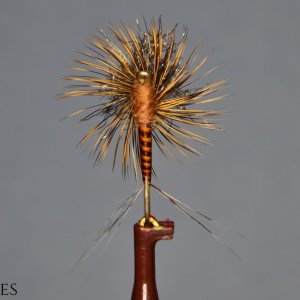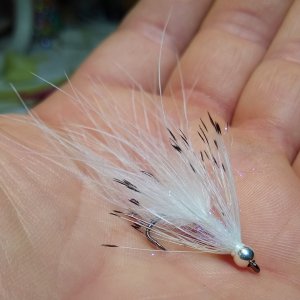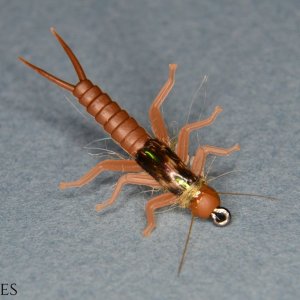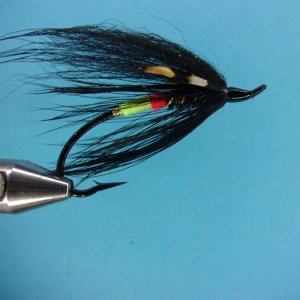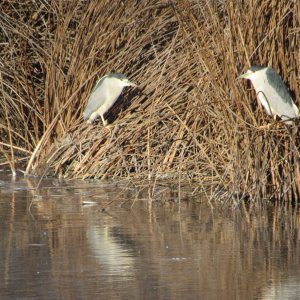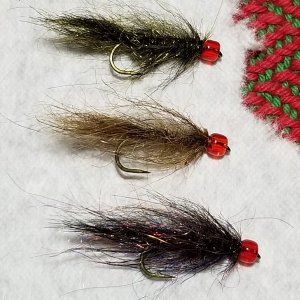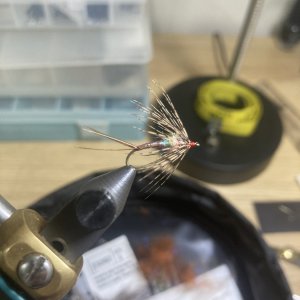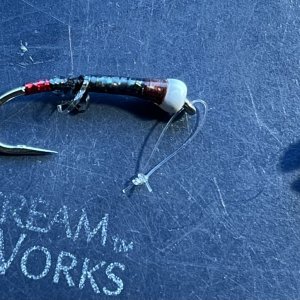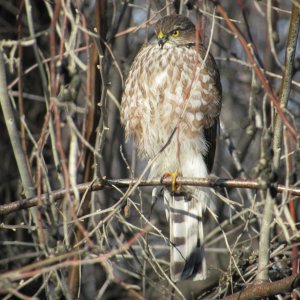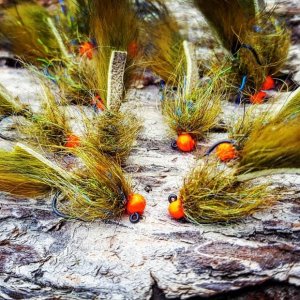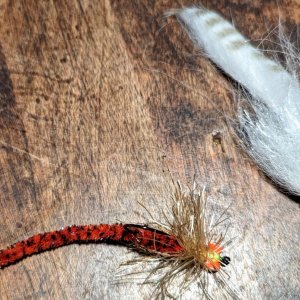You are using an out of date browser. It may not display this or other websites correctly.
You should upgrade or use an alternative browser.
You should upgrade or use an alternative browser.
Callibaetis nymphs
- Thread starter Mark Melton
- Start date
MillCreekMinnow
Steelhead
Thanks for sharing. I have always leaned more toward gray colors for calli's. Now I have to burn an entire box of flies! Great pics!!
Top notch photography Mark. To my eye, the mayfly nymph colors you have been showing us are so close to different parts of the hares mask. I like a pinch of light near the back and dark up front. The wider body and prevalent gills on these really shown I could be roughing up (picking out) the body more. I've been reading Softhackles by Sylvester Nemes. He states he first though his softhackles looked like mayflies, then later realized they looked like caddis. I've often though the hare's ear looked like a caddis, but realize now how much they look like mayflies. I'm just backward. I don't care for flies with wingcases, but I think I'm looking at doing a few more flymph ties.
Great pics!
I think there is quite a lot of variation in the color of callibaetis nymphs and adults in different habitats. I have certainly seen much grayer ones than these in lakes. I am not sure how much the fish actually care though.
Thanks for sharing. I have always leaned more toward gray colors for calli's. Now I have to burn an entire box of flies! Great pics!!
I think there is quite a lot of variation in the color of callibaetis nymphs and adults in different habitats. I have certainly seen much grayer ones than these in lakes. I am not sure how much the fish actually care though.
tkww
Steelhead
Certainly the adults can have a distinct gray cast to the bodies (and tans, and gray-tans). I always feel a little like the surrounding environment plays a role too. While I can't say the nymphs are exactly transparent, I have to think that one swimming through a grass mat is going to have a more olive look than one swimming over a mud bottom (or seen backlight against a blue sky).
Mark, the dark wing buds/pads? There seems to be considerable variation. Any insight there? (I've always been told a dark "wing case" means 'about to hatch,' but always thought of it as more the whole thorax top, not just pads.)
Mark, the dark wing buds/pads? There seems to be considerable variation. Any insight there? (I've always been told a dark "wing case" means 'about to hatch,' but always thought of it as more the whole thorax top, not just pads.)
Mark Melton
Life of the Party
The coloration of a nymph can be due to it's environment, species, and stage of development. I think you have to know how to match nymphs for a given area.Certainly the adults can have a distinct gray cast to the bodies (and tans, and gray-tans). I always feel a little like the surrounding environment plays a role too. While I can't say the nymphs are exactly transparent, I have to think that one swimming through a grass mat is going to have a more olive look than one swimming over a mud bottom (or seen backlight against a blue sky).
Mark, the dark wing buds/pads? There seems to be considerable variation. Any insight there? (I've always been told a dark "wing case" means 'about to hatch,' but always thought of it as more the whole thorax top, not just pads.)
The wingpads in these pictures are about half-way to emergence (the 2nd and 3rd pictures) and very close to emergence in the ones that are black. Those that are black will probably emerge in minutes to hours.
tkww
Steelhead
Thanks for the info!The coloration of a nymph can be due to it's environment, species, and stage of development. I think you have to know how to match nymphs for a given area.
The wingpads in these pictures are about half-way to emergence (the 2nd and 3rd pictures) and very close to emergence in the ones that are black. Those that are black will probably emerge in minutes to hours.
MillCreekMinnow
Steelhead
This is great info! I'm going to add black goose biots to rep the wing pads when I get back to cali's. Thank you!The coloration of a nymph can be due to it's environment, species, and stage of development. I think you have to know how to match nymphs for a given area.
The wingpads in these pictures are about half-way to emergence (the 2nd and 3rd pictures) and very close to emergence in the ones that are black. Those that are black will probably emerge in minutes to hours.

